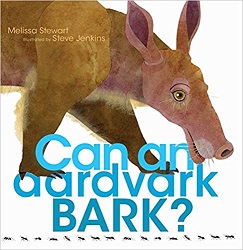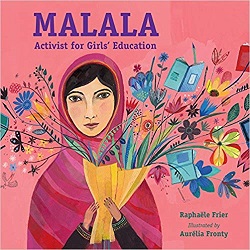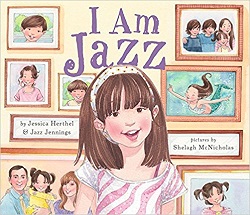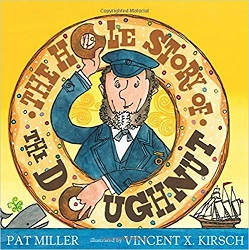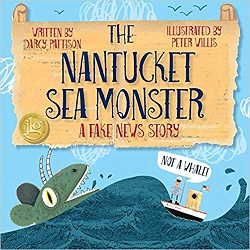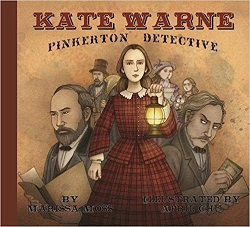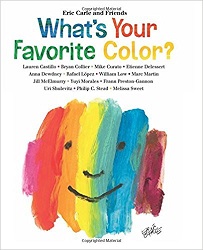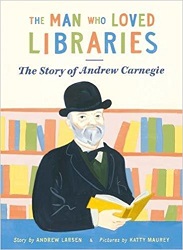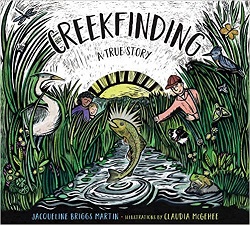Review of Can an Aardvark Bark? by Melissa Stewart, illustrated by Steve Jenkins
by Melissa Stewart
illustrated by Steve Jenkins
Beach Lane Books (Simon & Schuster), 2017. 32 pages.
Starred Review
I don’t need to keep on raving about Steve Jenkins’ ultra-realistic cut paper illustrations. In this book they’re paired with a text that invites young readers to wonder and to learn.
This book is in question-and-answer format, and all the questions are about animal sounds. The title question answers, “No, but it can grunt.” There’s also a paragraph on that page about when an aardvark might grunt. When we turn the page, we find out “Lots of other animals grunt too.” There are pictures and short explanations of the grunting that comes from river otters, Hamadryas baboons, white-tailed deer, and oyster toadfish.
The same format is used with six more types of animal noises: barking, squealing, whining, growling, bellowing, and laughing. All the questions asked rhyme (“Can a giraffe laugh?”), and one animal can actually make the rhyming sound! (A porcupine can whine. Who knew?)
The animals are not your typical animals seen in every animal book – and the pictures of them are varied and attention grabbing. I like the picture of the ostrich growling, across the page from other growlers like a platypus, a king cobra, and a coastal giant salamander.
This book has too much detail for preschool storytime, but it has exactly enough detail for a bright precocious preschooler who eats up information. This will carry easily through early elementary school students who will be fascinated enough to learn to read even the longer words.
This engaging format with striking illustrations and surprising animal facts puts a whole new spin on animal sounds. A brilliant early science book.
Find this review on Sonderbooks at: www.sonderbooks.com/Childrens_Nonfiction/can_an_aardvark_bark.html
Disclosure: I am an Amazon Affiliate, and will earn a small percentage if you order a book on Amazon after clicking through from my site.
Source: This review is based on a library book from Fairfax County Public Library.
Disclaimer: I am a professional librarian, but I maintain my website and blogs on my own time. The views expressed are solely my own, and in no way represent the official views of my employer or of any committee or group of which I am part.
What did you think of this book?
